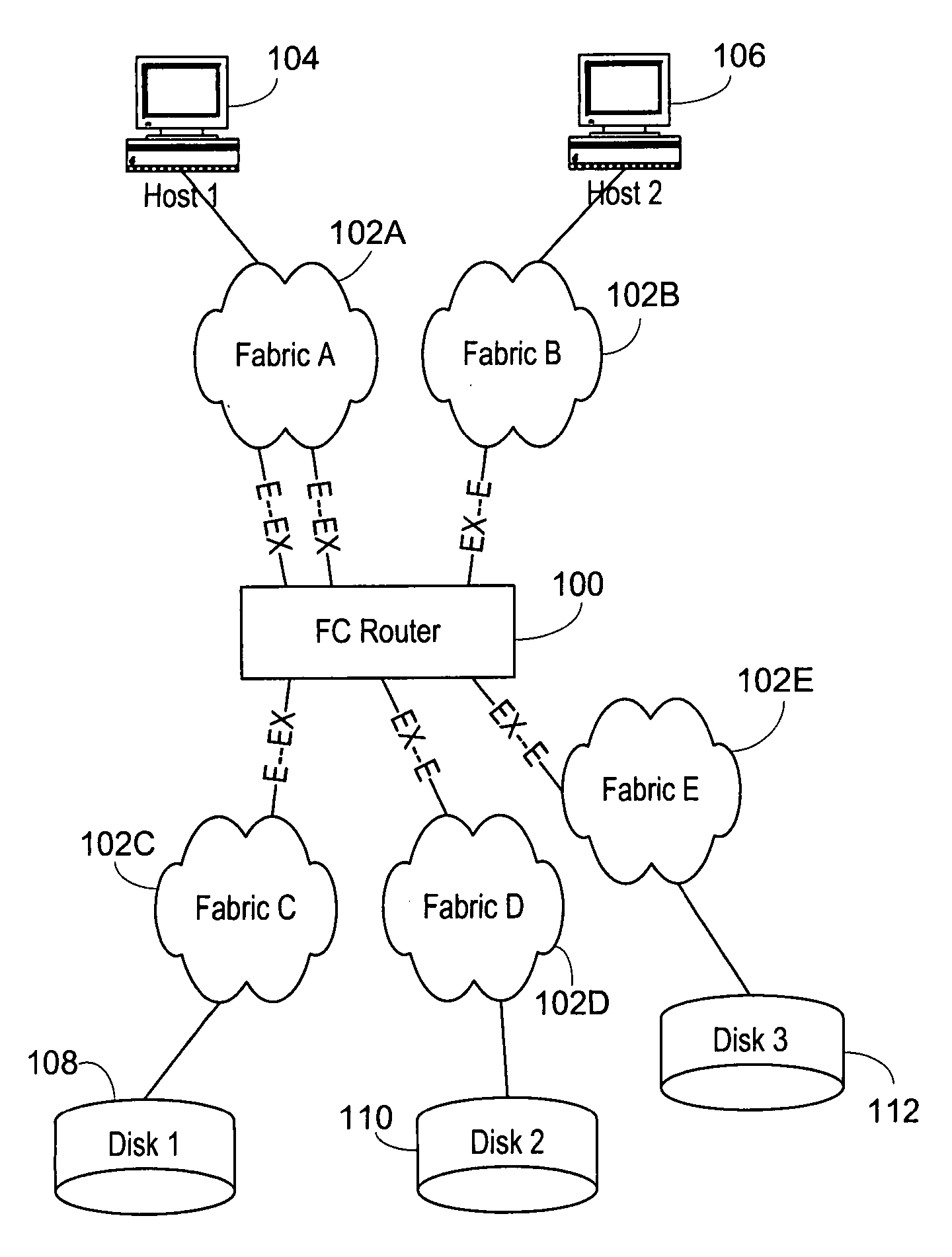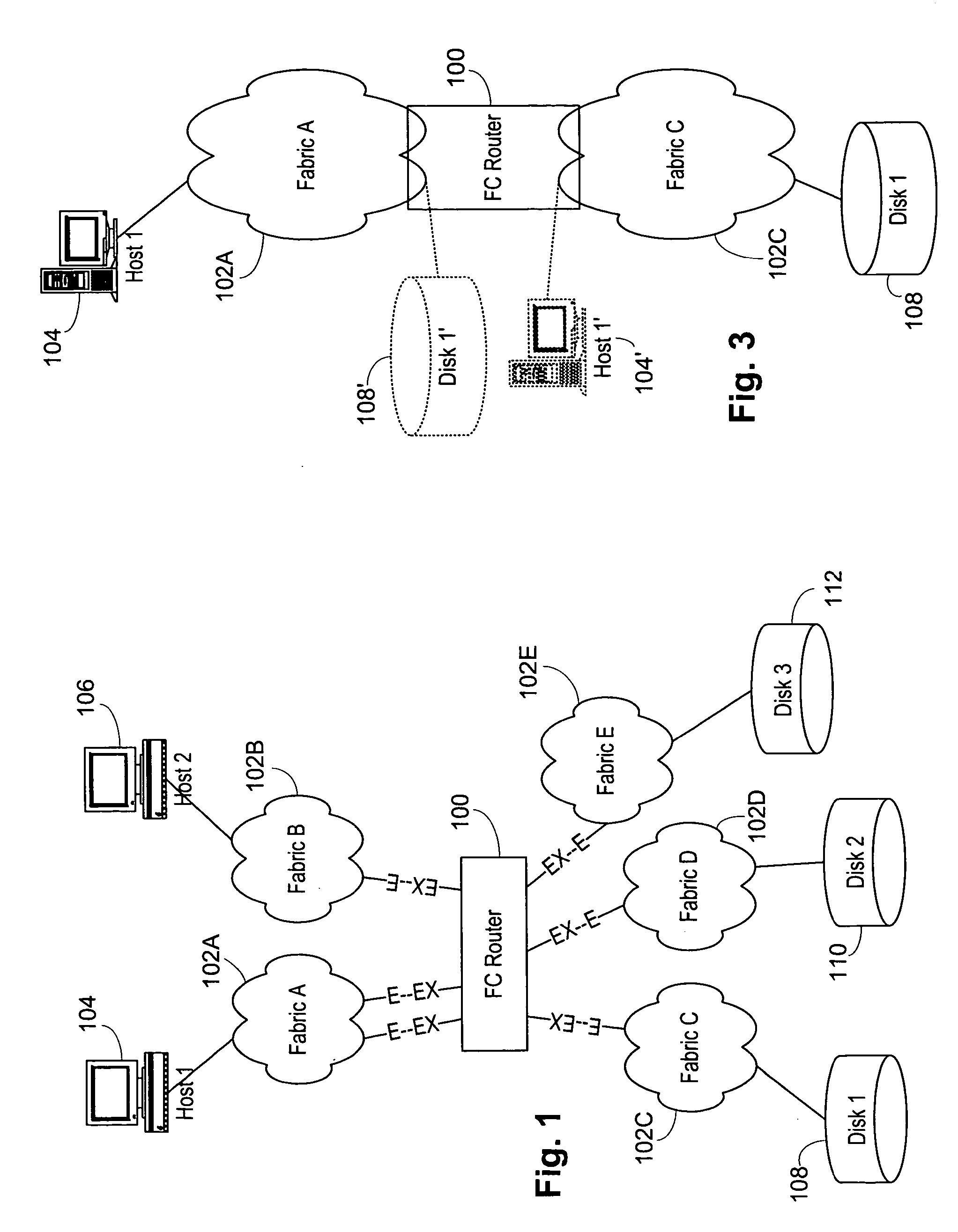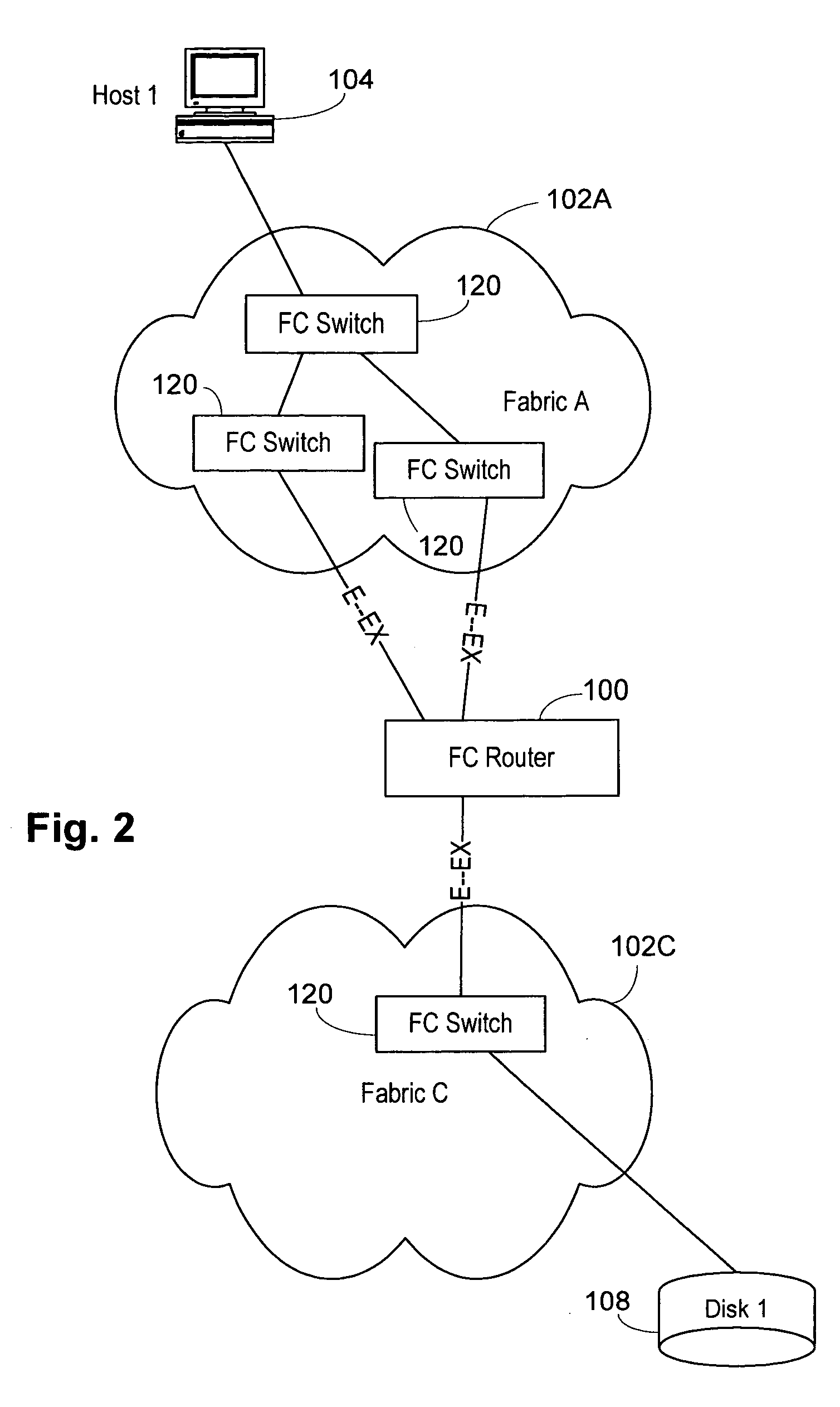System and method for providing proxy and translation domains in a fibre channel router
a technology of fibre channel router and proxy domain, applied in the field of storage area networking, to achieve the effect of improving the management of the entire network and facilitating the interconnection of devices
- Summary
- Abstract
- Description
- Claims
- Application Information
AI Technical Summary
Benefits of technology
Problems solved by technology
Method used
Image
Examples
Embodiment Construction
[0039] Referring now to FIG. 1, a Fibre Channel router 100 according to the present invention connected to a series of fabrics A-E 102A-102E by a series of links where a switch in each of the fabrics A-E 102A-102E has an E_port connected to an EX_port of the Fibre Channel router 100. An EX_port is, in great respects, an E_port but it does not cause the merger of the remainder of the Fibre Channel router 100 with the connected edge fabric 102. A host 104 is connected to fabric A 102 A, while a host 106 is connected to a fabric B 102 B. Similarly, storage devices 108, 110 and 112 are connected to fabrics C-E 102C-102E.
[0040] Referring then to FIG. 2, it can be seen that the fabric A 102A includes a series of Fibre Channel switches 120 which are interconnected to connect to the host 104 and have multiple connections to the Fibre Channel router 100. In the second fabric C 102C, the storage device 108 is connected to a single Fibre Channel switch 120, which has a single link to the Fibr...
PUM
 Login to View More
Login to View More Abstract
Description
Claims
Application Information
 Login to View More
Login to View More - R&D
- Intellectual Property
- Life Sciences
- Materials
- Tech Scout
- Unparalleled Data Quality
- Higher Quality Content
- 60% Fewer Hallucinations
Browse by: Latest US Patents, China's latest patents, Technical Efficacy Thesaurus, Application Domain, Technology Topic, Popular Technical Reports.
© 2025 PatSnap. All rights reserved.Legal|Privacy policy|Modern Slavery Act Transparency Statement|Sitemap|About US| Contact US: help@patsnap.com



